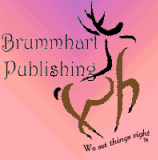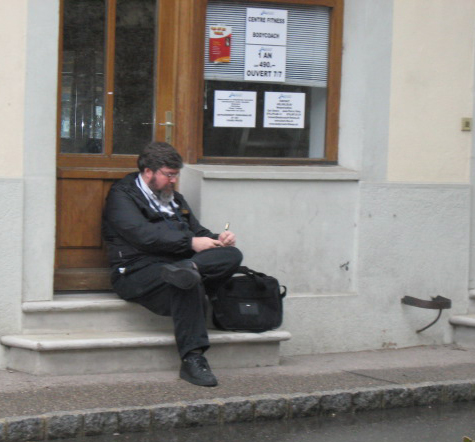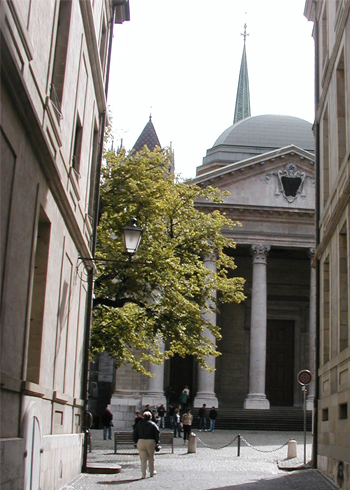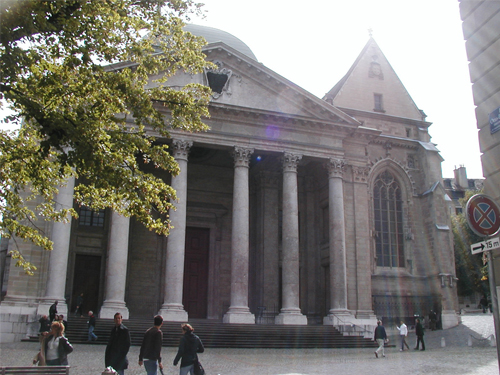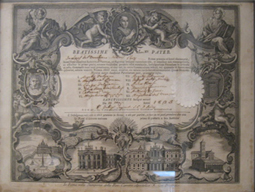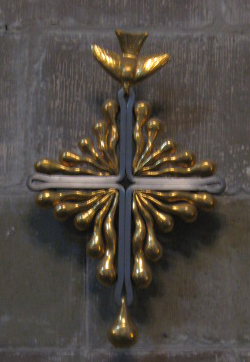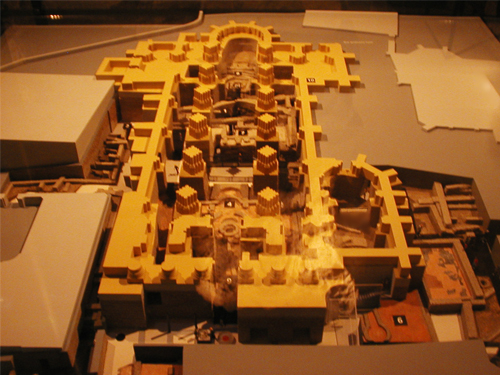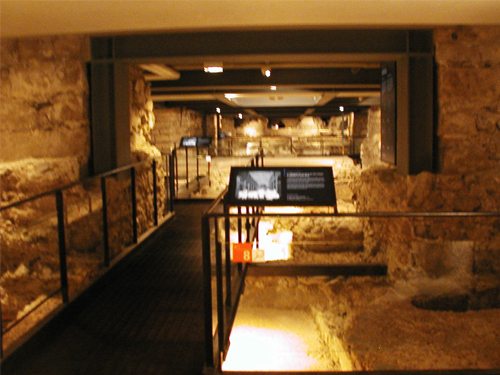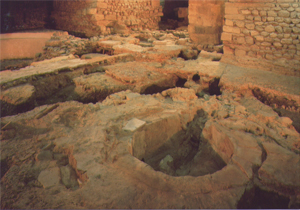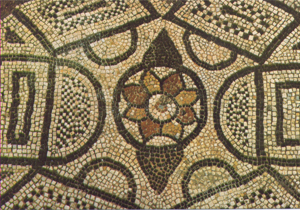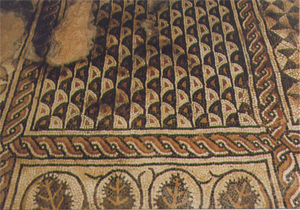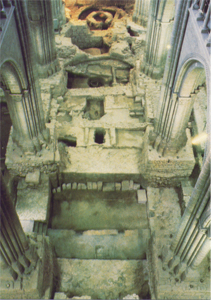|
| Home |
| Synod Celebration |
| Biographies |
| Hymnic Materials |
| Belhar Hymns |
| A Liturgical Miscellany |
| Musicals for Children |
| Links |
| From the Silence |
| Europe 2008 |
| Just for Fun |
| Contact Us |
|
The information we had led us to believe that a bus would leave Céligny in time for us to make it to early worship at St. Peter's and have time for the tour of its underground archaeological dig and the nearby Reformation museum. So we packed up our day's necessities and sauntered down to the bus stop. To our consternation, the information we had was wrong. However, we did get a chance to take some nice shots of the center of town. |
|
By the time the bus and train got us into the city, we missed getting to worship, but at least the weather was much drier today.
The University of Geneva, at the base of the hill of the old town. |
|
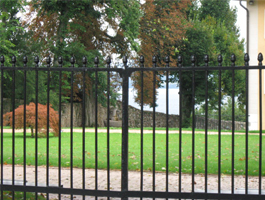 |
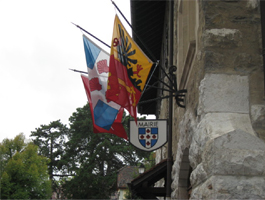 |
||
|
Approach to St. Peter's Cathedral |
St. Peter's Cathedral façade, with Calvin's Auditoire to the right. |
||
|
If you turn left from facing St. Peter's and continue a little way, you will find the Reformation museum. We were advised by friends to make this stop, as we might find it enriching. Donald, of Institute meal fame, was of the opinion that its view of the Reformation was slanted, but wondered what we would think.
Indulgence certificate Huguenot cross |
|
Among the displays in the International Museum of the Reformation were indulgence certificates, on which Pope Leo the 12th guaranteed the bearer exemption from divine punishment in Purgatory; a dinner table set with Calvin at one end, and seated in order of their agreement with him, other luminaries of his age; a vernacular Bible, burnt at the edges, which was used by Reformed believers but hidden in the hearth from Catholic authorities; and recorded samples of organ-accompanied tunes of the Reformation era and later. The quote that follows gives an idea of how music was used in newly Reformed worship. On the whole, the impression I got was that the Reformation what completely good and the Roman opposition entirely the contrary. The audio-visual presentation was especially sharp in this regard, and though they have a point about the abuse of power in the church, I felt it was more than a bit overwrought. |
|
|
The Reformation had a special affinity for (congregational) music. Luther invented the chorale, Calvin developed the use of psalms, while Clement Marot, and especially Theodore de Bèze, took on the task of translating the psalms into French verse, a project they completed in 1562. Outstanding musicians such as Claude Goudimel set these to music, and they soon became famous. The Genevan Psalter thus spread to all the French-speaking Protestant communities and was adapted in several languages. Calvin believed that singing had a great power to “move and inflame the hearts of men (sic) to invoke and praise God with a more vehement and fervent zeal.” For music has a “secret and almost incredible virtue to move the heart.” During the church service, Calvin wanted the congregation to sing in unison so that everyone could take part in the singing of psalms. In a domestic setting, however, one could add voices, use instruments, transcribe, and paraphrase the psalms. Musicians took full advantage of this freedom, and used well-known hymn melodies as a basis for the most diverse compositions. From the Reformation Museum we took a break for lunch at a local restaurant. I was tempted by another patron's enjoyment of a pot of cheese fondue, but James opted for a sausage plate. Both were palatable; the fondue was fun to eat. Next up was the archaeological dig under the cathedral. Here follows a sampling of the sights buried under the present worship space. |
A model of the former foundations, previous to the present cathedral. |
||
|
The dig is ongoing, although much of it is labeled and there are catwalks for visitors to the site.
|
The former baptistry |
Floor of the bishop's receiving room |
|
|
Roman-era floor |
View of the nave to the baptistry |
||
